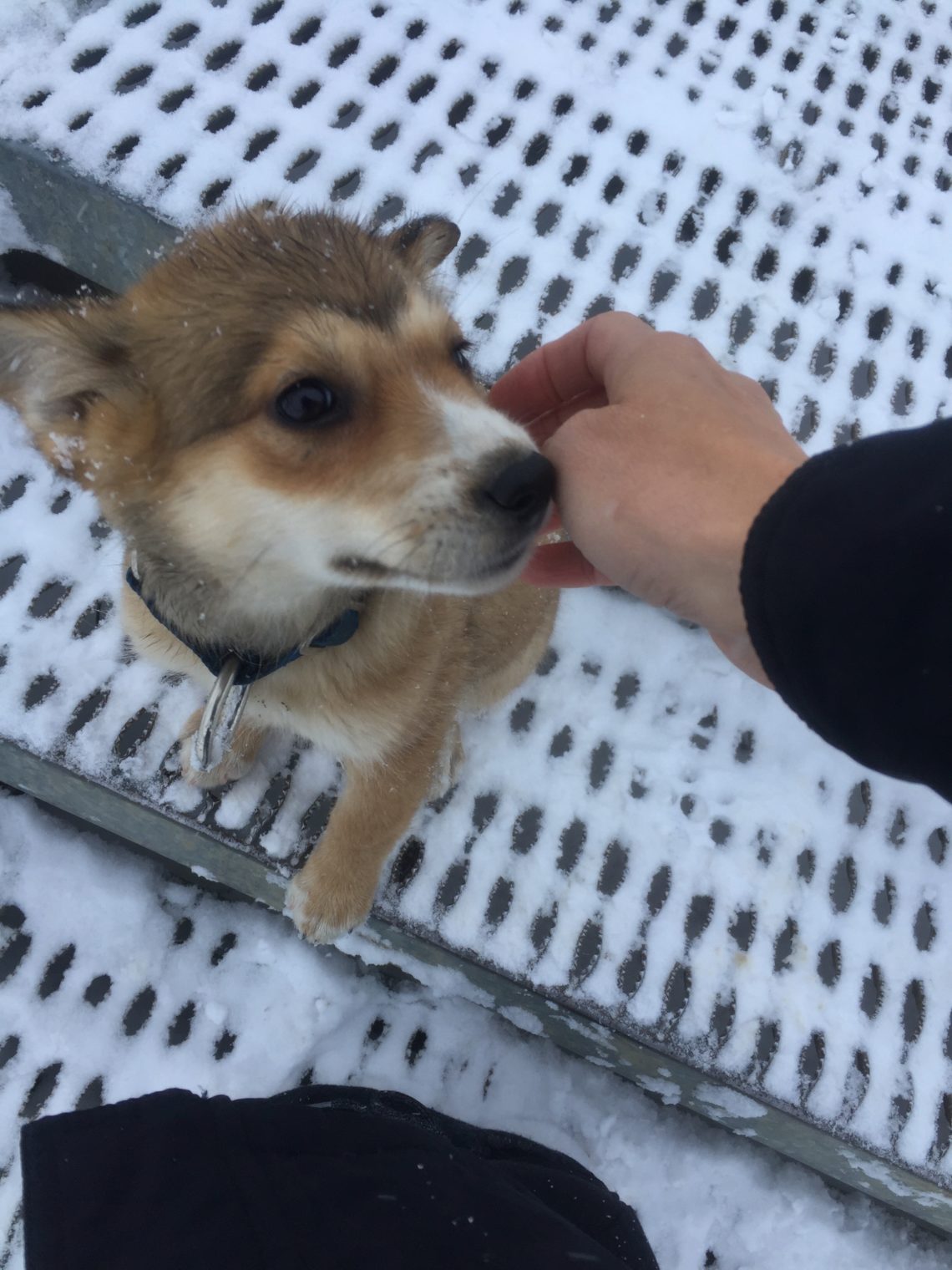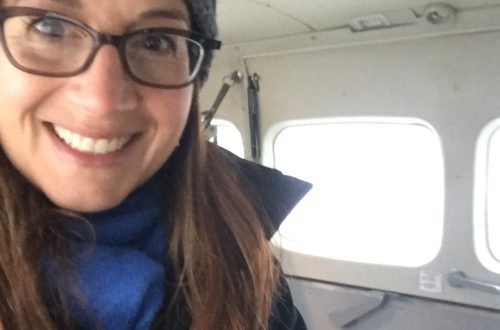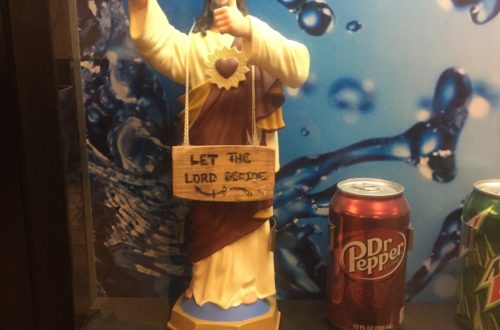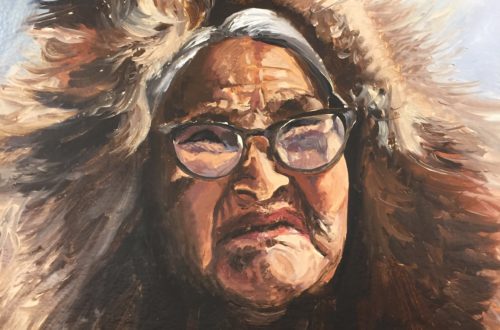
Sad Alaska (4/5)
Most of the villages are dry, meaning the sale and the possession of alcohol is illegal. But that doesn’t keep the villagers from consuming it.
Alaska has one of the highest alcohol consumption rates in the nation. Alcohol dependence and abuse rates are twice the national average. According to Alaska criminal justice professionals, alcohol is the primary substance of abuse. It contributes to many violent, suicidal, and accidental deaths, especially in the rural areas. Alcohol causes 7% of Alaskan Native deaths.
Black market alcohol, whether it’s household products or smuggled liquor, isn’t cheap. Cans of hairspray and Lysol can sell for $75 to $100 on the street. State troopers say imported fifths of whiskey average $150 per bottle. (These numbers were from 2009.) To fund the fix, people can often be heard on the local VHF radio, peddling cameras, DVDs, and television sets at big discounts for quick cash.
In its short history as a state, Alaska earned an unnerving epithet: It is the rape capital of the United States. The FBI Crime Report reveals 80 rapes per 100,000. Alaska’s rape rate is almost three times the national average. For child sexual assault, it’s nearly six times the national average. According to the 2010 Alaska Victimization Survey, the most comprehensive data to date, 59% of Alaskan women have been victims of sexual assault, intimate partner violence, or both. Native women are 9.7 times more likely than other Alaskan women to be victims of sexual assault. Over two-thirds of Native sexual assault victims attribute their attacker’s actions to drinking alcohol and/or taking drugs before the offense.
The taboos surrounding rape in Alaska suggests that the crime is actually hugely underreported. Why? Offenders are rarely punished. Of nearly 1,000 cases of sexual assault studied by the University of Alaska Anchorage Justice Center, 46% were referred for prosecution and only 22% resulted in a conviction. Lieutenant Andrew Merrill, a state trooper who lives and works in the bush of Alaska, notes that the perpetrator is also “the one that chops wood, hauls the water, and hunts the caribou”. Women state, “I want this to stop, but I also need to survive”, and “People don’t really fear the law here.”
Village Public Safety Officers are dedicated professionals who provide fire protection, law enforcement, search and rescue coordination, emergency medical services, and safety education. VPSO’s are the first to respond to calls for help from community members. They don’t carry guns, but they do have tasers. Approximately one in five villages has a VPSO.
Alaska State Troopers are the general police. They are charged with statewide law enforcement, prevention of crime, pursuit, and apprehension of offenders. They also serve as civil and criminal processors, prisoner transportation, central communications, and search and rescue. The troopers are game and wildlife enforcement officers. They are armed. But there is only about one trooper per every million acres. Getting to rural communities can take days and is often delayed by the great distances, the vagaries of the weather and, in the minds of many Alaska Natives, the low priority placed on protecting local tribes. Often by the time the troopers arrive on the scene, the case is cold, and no one will talk.
Suicide is prevalent in rural Alaska. Alaska has one of the highest rates of suicide per capita in the country. In 2014, Alaska’s rate was 22.3 suicides per 100,000 people. The rate of suicide among only Alaska Native peoples was 35.1. The entire United State had 12 suicides per 100,000 people. Men committed 82.6% and women committed 17.4% of suicides. The rate of Alaska Native males that died by suicide was 50.9 suicides per 100,000, nearly four times the national average.
As unlikely as it seems, studies show there is no fluctuation of suicide rates related to the amount of sunlight. There is no seasonal fluctuation in suicide rates in Alaska over the year. Latitude is more of a predictor. For every five degree increase in latitude — about 345 miles — the suicide rate jumped 18 percent, according to the model. Alaska spans almost 20 degrees of latitude. The study didn’t land on a reason why.
The 1964 Alaskan earthquake, also known as the Great Alaskan earthquake or the Good Friday earthquake, occurred at 5:36 pm on March 27. Across south-central Alaska, 139 deaths resulted from ground fissures, collapsing structures, and tsunamis. Lasting four minutes and thirty-eight seconds, the magnitude 9.2 megathrust earthquake was the most powerful recorded in North American history, and the second most powerful recorded in world history. There is a park in Anchorage called Earthquake Park is dedicated to education on this disaster.
Each year Alaska has about 5,000 earthquakes including 1,000 that measure above 3.5 on the Richter scale. Of the 10 strongest earthquakes ever recorded in the world, three occurred in Alaska.
The village dogs are permanently stuck in my head and heart. Most houses have dogs tied outside. At this time of year, it is (only) zero degrees at night. There are very few dog houses for protection from the wind and mostly no water or food that I could see. Families keep the dogs tightly chained by too-small collars and with too-short of a perimeter. One of these local dogs howls in pain one entire night. We hear him just outside the door to the library where we sleep, fitfully. We have no recourse to help him. In the morning, there is silence. A villager tells me that the dogs will succumb to the cold or that a neighbor will shoot them to end their horrible suffering. Deeply disturbed, I ask why the natives bother to keep the animals at all. The answer is “protection.”
According to a notice in Kotzebue, outdoor animals must have a dog house, straw in the doghouse, daily food, and non-frozen water. Collars can’t be embedded in the dog’s neck. What I witness in the villages is far from these idealistic regulations.
There is absolutely no veterinary care here. Dogs don’t get spayed or neutered. There are many puppies (and then eventually grown dogs) that roam free. I feel more hopeful for these animals because they seem to have a better chance of survival. They can find food on their own, charm someone into giving them water, and hide under abandoned houses for shelter.
Heart. Broken.
Life in rural Alaska is costly. Transport costs are added to everything. For example, in 2007, the average price of gasoline was $4.87 per gallon, while the national average was $2.47. A liter of milk costs $0.85 nationally in 2018. During our visit to Noorvik, it was $5.60 and long expired.
Selawik has the worst stats for education among the villages I visited. The average test score for children in school was 5%. An average of 53.2% students complete high school. Only 2.4% receive a bachelor’s degree or higher. To give you a frame of reference, the average United States test scores are 49%, 83% graduate high school and 59% graduate college.
The student population in rural Alaska is primarily indigenous, but the educators are overwhelmingly non-Native. Fewer than 5% of certificated teachers are indigenous, and fewer yet are administrators. Most of the educators are from outside Alaska. Between 2008 and 2012, the state of Alaska trained fewer than 15% of the teachers. Teachers from the lower 48 often aren’t prepared for the diverse cultures in Alaska. There are efforts in place to improve teacher preparedness and reduce turnover rates in the remote school districts.
The social problems discussed above are a legacy of the history of Alaska and contribute to the low test scores. It is difficult to concentrate on school when you are dealing with major issues outside of school.
The Alaska mosquito population is stuff of legend. There are 35 species and all but a few will feed on humans. By far, the most prevalent bug is the mosquito, which is why locals jokingly call them “The State Bird of Alaska.” Every year, the mosquitos congregate in hordes that are thickest from the Yukon River north to the Arctic Ocean. They torment the caribou and humans relentlessly. Mosquitoes play a substantial role in migration, as the caribou will travel into the wind to avoid mosquitoes. A caribou can lose 300 milliliters of blood per day to mosquitos. Mosquitos are at their highest numbers between the 20th of June and the 31st of July.
The Permanent Fund Dividend belongs in both categories- happy and sad Alaska. The happy part is the government gives a sum of money to every person just for being an Alaskan resident. The sad part is that there is a rash of crime that occurs every October when the fund is paid out. With the influx of money into the hands of the residents, people carry more money and they spend more. There is more expensive stuff in houses to steal. There are more people buying drugs and alcohol, leading to more dangerous, altered states and subsequent violence and rape. The optical companies don’t schedule trips directly after the payout dates for safety reasons.
Seasonal affective disorder (SAD) is a type of depression that’s related to changes in seasons. Symptoms start in the fall and continue into the winter months, sapping your energy and making you feel moody. The prevalence of SAD (Seasonal Affective Disorder) in the United States ranges from 1% in Florida, to more than 9% in Alaska.
The negative aspects to Alaska are numerous. However, they still contribute to the overall personality and aura of Alaska, making it a beautiful dichotomy of wonder.


You May Also Like

Anchorage and Kotzebue, Alaska (1/5)
January 22, 2018
Happy Alaska (5/5)
January 26, 2018
